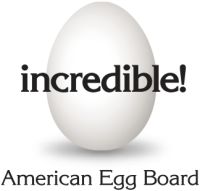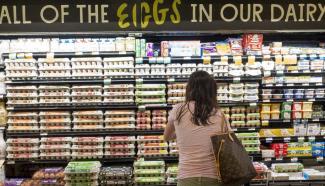
 The American Egg Board (AEB) recently resumed circulation of Nielsen data reflecting 52-week rolling sales and consumption of eggs and egg products for the week ending February 20th 2021. Nielsen data captures retail volume and sales value of shell eggs, consumer-packed liquid and cooked peeled eggs. Data is derived from supermarkets, groceries, dollar outlets, drug and convenience stores all with annual sales in excess of $2 million. Some club warehouses provide data but Costco is excluded.
The American Egg Board (AEB) recently resumed circulation of Nielsen data reflecting 52-week rolling sales and consumption of eggs and egg products for the week ending February 20th 2021. Nielsen data captures retail volume and sales value of shell eggs, consumer-packed liquid and cooked peeled eggs. Data is derived from supermarkets, groceries, dollar outlets, drug and convenience stores all with annual sales in excess of $2 million. Some club warehouses provide data but Costco is excluded.
The data assembled by Nielsen and distributed by the AEB for the current month covers 3.4 billion dozen egg-equivalents over the 52-week period. This represents 42 percent of 2020 egg production totalling 8.06 billion dozen or capture of approximately 65 percent of the shell egg segment of the industry.
- For the 52-week period, retail sales of all eggs expressed as egg-equivalents increased 7.0 percent. Dollar value was 10.3 percent higher than the previous 52-week period. Per capita consumption advanced to 287.1 eggs representing a 0.4 percent increase. Direct comparisons are distorted by the late March and April 2020 panic buying in response to COVID restrictions
- On a rolling-52-week basis, the volume captured by Nielsen comprising retail shell-egg sales attained 3.42 billion egg equivalent dozens representing a 9.6 percent increase in volume and a19.9 percent increase in dollar value to $6.9 billion. Egg alternatives including liquid, frozen and powdered egg products converted to equivalent dozens attained 93.1 million a 13.1 percent increase over the previous 52-week period and a 14.3 percent increase in dollar value. Rolling 52-week hard boiled egg sales attained 28.5 million dozen equivalents amounting to a 9.6 percent decline in volume and a disproportionate 15.5 percent decline in value.
- In classifying retail sales by product segment, conventional eggs represented 84.9 percent, cage-free 12.3 percent and organic 2.8 percent. Rolling 52-week conventional egg sales increased 5.4 percent in volume and 7.4 percent in value. Cage-free eggs increased 19.2 percent in volume and were almost equivalent at 19.6 percent in value. Organic eggs increased 7.6 percent in volume and 15.5 percent in value.
- With respect to volume of other than generic shell eggs, 52-week rolling branded egg sales comprised 29.2 percent of retail sales compared to 70.8 percent for private label. Branded eggs generated 43.3 percent of dollar value compared to private label at 56.7 percent. Branded eggs increased by 13.9 percent in volume and 19.5 percent in value.
- In analyzing retail channels, 52-week rolling values compared to the previous period, supermarkets and groceries increased by 8.1 percent, drugstores declined by 3.9 percent, convenience stores were up by 4.7 percent and the combination of club stores and dollar stores increased by 5.7 percent presumably with the largest contribution from big-box clubs.
In reviewing current USDA data there are 68 million hens producing cage-free eggs, excluding non-confined hens under the Certified Organic program. This complement of hens represents 30.2 percent of an assumed population of 225 million hens in the  shell egg segment of production. If USDA data on hens under cage-free housing (aviaries and barns) are accurate and accepting the Nielsen data indicating a sales proportion of 12.3 percent for this category, more than half of cage-free eggs are down-marketed to conventional. If the Nielsen data is accurate the situation with Certified Organic is even more extreme with 7.8 percent of 225 million hens producing under the category but representing 2.8 percent of shell egg sales YTD. The differences between potential production and recorded sales cannot be ascribed to use of cage-free and organic eggs in egg liquids. The nominal (pre-COVID) complement of hens producing eggs for the breaking segment is estimated at 95 million, predominantly as generics.
shell egg segment of production. If USDA data on hens under cage-free housing (aviaries and barns) are accurate and accepting the Nielsen data indicating a sales proportion of 12.3 percent for this category, more than half of cage-free eggs are down-marketed to conventional. If the Nielsen data is accurate the situation with Certified Organic is even more extreme with 7.8 percent of 225 million hens producing under the category but representing 2.8 percent of shell egg sales YTD. The differences between potential production and recorded sales cannot be ascribed to use of cage-free and organic eggs in egg liquids. The nominal (pre-COVID) complement of hens producing eggs for the breaking segment is estimated at 95 million, predominantly as generics.